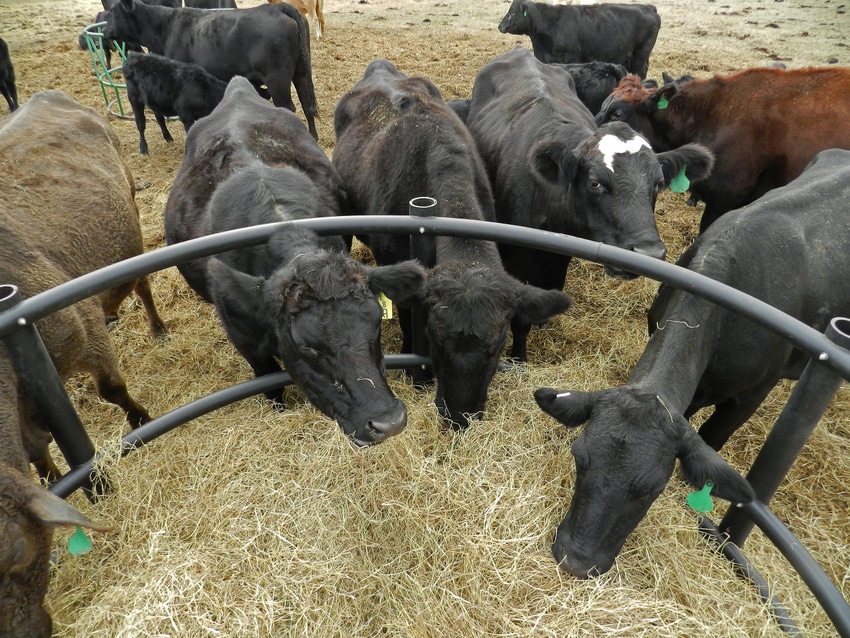Most of the available hay this winter is going to come from those areas that received ample rainfall and faced less-than-ideal harvesting conditions. Under those circumstances, mold becomes an issue.
October 29, 2015

As winter approaches we need to start thinking about feeding hay. This year has been very hit-or-miss in terms of rainfall. Those who got it, got more than enough. And those who didn’t, well... The problem is that most of the available hay is going to come from those areas that received ample rainfall and faced less-than-ideal harvesting conditions. Under those circumstances, mold becomes an issue.
No matter how hard you try, all hay will have at least a small amount of mold. Mold growth can occur in the field during the drying process or after baling. Unless mold is present at a level that it can be readily smelled and seen with the human eye, it usually isn’t an issue for your livestock. Horses and other non-ruminants are most susceptible to mold toxicity; however, ruminants can also be affected under certain circumstances. When mold is obviously present, you need to take action to minimize negative effects caused by dust, mycotoxins and reduced nutritional quality.
 The physical dust created by the mold spores can be an issue. Horses are most susceptible and can develop respiratory issues, Recurrent Airway Obstruction (RAO or heaves). A horse with RAO has a normal temperature and appetite but exhibits labored breathing during exercise with coughing and nasal discharge.
The physical dust created by the mold spores can be an issue. Horses are most susceptible and can develop respiratory issues, Recurrent Airway Obstruction (RAO or heaves). A horse with RAO has a normal temperature and appetite but exhibits labored breathing during exercise with coughing and nasal discharge.
Not all molds produce dangerous mycotoxins and even the ones that do, produce variable amounts. Once again, horses and non-ruminants are most susceptible. Ruminants are protected to some extent due to rumen fermentation, but they are still susceptible when the mycotoxin load is excessive, especially pregnant animals and those under stress. The potential negative effects of mycotoxins include: abortions, reduced feed intake, lowered fertility, suppression of the immune system, lethargy and increased morbidity.
Additionally, heat generated by mold growth can result in significant loss of dry matter and energy within the forages. Carbohydrates are consumed by the mold and heating denatures protein rendering it unavailable for use by the animal. The overall result is poor nutritional quality.
So if you find yourself with moldy hay, what can you do? Below is a list of strategies that you can follow to deal with moldy hay:
The first thing to do is to identify your most “at risk” animals and avoid feeding them moldy hay if possible. Animals deemed to be the most at risk will be non-ruminants, especially horses, and pregnant and/or stressed livestock.
Next, identify the least susceptible animals (mature male ruminants, open mature female ruminants) and feed the worst hay to them.
Allow livestock to sort through hay and reject moldy portions. Remove rejected hay and discard.
Another strategy is to dilute the moldy hay with “clean” feed. This can be good quality hay or high fiber feedstuffs such as soyhull pellets, dried distillers’ grains or baled corn stover.
Feed hay outside to minimize respiratory issues due to dust.
If late enough in the season, you can use temporary fencing to take advantage of new spring growth in non-pasture areas to reduce reliance on hay.
In all cases, provide high quality minerals or vitamins and make sure that protein and energy are not lacking in the diet. There are a wide variety of self-fed supplement products that can help you meet these needs. Livestock on a high nutritional plane will be much more capable of withstanding a temporary encounter with mycotoxins than animals that are lacking.
Visit www.crystalyx.com for more information on providing quality minerals, vitamins and protein through self-fed low moisture block supplements.
You might also like:
5 questions to ask before grazing corn stalk residue
Timing is everything when it comes to weaning
5 traits of a successful beef producer
Why you shouldn't feed your cows like steers in a feedlot
You May Also Like



